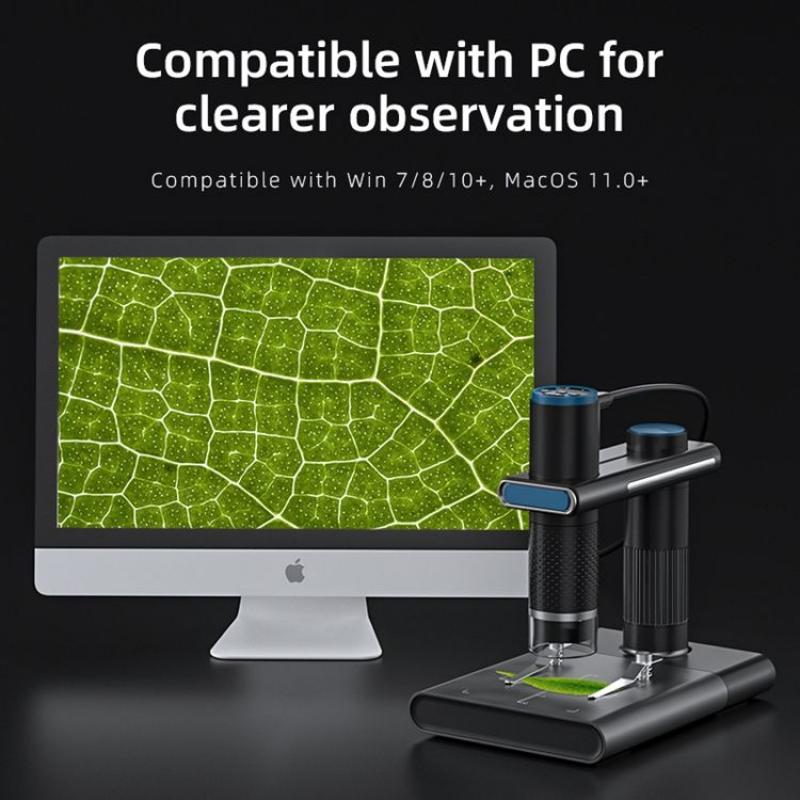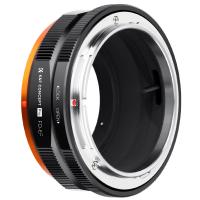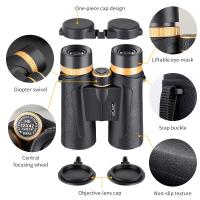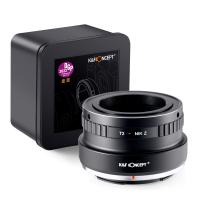When Was Scanning Electron Microscope Invented ?
The scanning electron microscope (SEM) was invented in 1938 by Max Knoll and Ernst Ruska.
1、 Invention of the Scanning Electron Microscope (SEM) - Historical Overview
The Scanning Electron Microscope (SEM) was invented in the early 1930s by a team of researchers led by Max Knoll and Ernst Ruska. Knoll, a physicist, and Ruska, an electrical engineer, collaborated to develop a new type of microscope that could provide high-resolution images of the surface of materials. Their invention revolutionized the field of microscopy and opened up new possibilities for scientific research.
The first working SEM was built in 1931, and it used a beam of electrons instead of light to create images. This allowed for much higher magnification and resolution than traditional optical microscopes. The SEM works by scanning a focused beam of electrons across the surface of a sample, and detecting the signals that are emitted as a result. These signals are then used to create an image of the sample's surface.
Since its invention, the SEM has undergone significant advancements and improvements. In the early years, the SEM was limited in its capabilities and required a high level of expertise to operate. However, with the advent of computer technology, the SEM became more user-friendly and automated. This made it more accessible to researchers in various fields, including materials science, biology, and nanotechnology.
In recent years, there have been further advancements in SEM technology. For example, the introduction of field emission SEMs has allowed for even higher resolution imaging. Additionally, the development of environmental SEMs has enabled researchers to study samples in their natural state, without the need for extensive sample preparation.
Overall, the invention of the Scanning Electron Microscope in the 1930s marked a significant milestone in the field of microscopy. It has since become an indispensable tool for scientists and researchers, enabling them to explore the microscopic world with unprecedented detail and clarity.

2、 SEM Development Timeline and Key Innovators
The scanning electron microscope (SEM) was invented in the early 1930s by a team of researchers led by Max Knoll and Ernst Ruska. Knoll, a physicist, and Ruska, an electrical engineer, collaborated to develop the first working prototype of the SEM at the Technical University of Berlin in Germany.
The initial design of the SEM was based on the principles of electron optics, which had been established by Hans Busch in the 1920s. Knoll and Ruska further refined these principles and incorporated them into their microscope design. Their invention allowed for the visualization of samples at much higher magnifications and resolutions than were possible with traditional light microscopes.
The first successful demonstration of the SEM took place in 1931, and by 1935, Knoll and Ruska had published their groundbreaking work on the instrument. Their invention revolutionized the field of microscopy, enabling scientists to study the surface morphology of a wide range of materials with unprecedented detail.
Since its invention, the SEM has undergone significant advancements and improvements. In the 1960s, the introduction of computerized control systems and digital imaging greatly enhanced the capabilities of the SEM. This allowed for more precise control of the electron beam and improved image quality.
In recent years, there have been further developments in SEM technology, such as the incorporation of environmental chambers that enable imaging of samples under controlled temperature and humidity conditions. Additionally, advancements in detector technology have led to the development of new imaging modes, such as energy-dispersive X-ray spectroscopy (EDS) and electron backscatter diffraction (EBSD), which provide valuable chemical and crystallographic information about the sample.
Overall, the invention of the scanning electron microscope in the 1930s laid the foundation for a powerful tool that has revolutionized the field of microscopy and continues to be a vital instrument in scientific research and industrial applications.

3、 Advancements in SEM Technology and Instrumentation
The scanning electron microscope (SEM) was invented in 1938 by a team of researchers led by Manfred von Ardenne in Germany. However, it was not until the 1960s that the technology became widely available and began to be used in various scientific fields.
Since its invention, there have been significant advancements in SEM technology and instrumentation. One of the major advancements is the development of field emission SEMs (FE-SEMs) in the 1970s. FE-SEMs use a field emission electron source, which allows for higher resolution imaging and improved surface sensitivity compared to conventional SEMs.
Another important advancement is the introduction of environmental SEMs (ESEM) in the 1980s. ESEMs are capable of imaging samples in a controlled environment, such as in the presence of water vapor or at high temperatures. This has opened up new possibilities for studying biological samples and materials that are sensitive to vacuum conditions.
In recent years, there have been further advancements in SEM technology, such as the development of scanning transmission electron microscopy (STEM) detectors. STEM detectors allow for simultaneous imaging and elemental analysis, providing valuable information about the chemical composition of a sample at high resolution.
Furthermore, there have been improvements in SEM imaging techniques, such as the introduction of low-voltage SEM imaging. Low-voltage SEM allows for imaging of non-conductive samples without the need for coating them with a conductive material, which can alter their properties.
Overall, advancements in SEM technology and instrumentation have greatly expanded the capabilities of this imaging technique. SEMs are now widely used in various scientific fields, including materials science, biology, geology, and nanotechnology. The continuous development of SEM technology is expected to further enhance its resolution, sensitivity, and versatility in the future.

4、 Applications of Scanning Electron Microscopy in Various Fields
The scanning electron microscope (SEM) was invented in 1931 by Max Knoll and Ernst Ruska. This groundbreaking invention revolutionized the field of microscopy by allowing scientists to observe the surface of samples with unprecedented detail and clarity. The SEM works by scanning a focused beam of electrons across the surface of a sample, and then detecting the secondary electrons that are emitted from the sample. This information is then used to create a highly magnified image of the sample's surface.
Since its invention, the SEM has found applications in various fields, contributing to advancements in science and technology. In materials science, SEM is used to study the microstructure of materials, such as metals, ceramics, and polymers. It allows researchers to analyze the surface morphology, grain boundaries, and defects in materials, providing valuable insights into their properties and behavior.
In the field of biology, SEM has been instrumental in studying the structure and function of cells and tissues. It has enabled researchers to visualize the intricate details of cellular structures, such as cell membranes, organelles, and surface features. This has led to a better understanding of biological processes and has contributed to advancements in fields like cell biology, microbiology, and pathology.
In the field of nanotechnology, SEM has played a crucial role in characterizing and manipulating nanoscale materials and devices. It allows researchers to visualize and analyze nanoparticles, nanowires, and other nanostructures, providing valuable information about their size, shape, and composition. This has paved the way for the development of new materials and devices with enhanced properties and functionalities.
In recent years, there have been advancements in SEM technology, such as the introduction of environmental SEMs that allow imaging of samples in their natural state, and the development of high-resolution SEMs that can achieve sub-nanometer resolution. These advancements have further expanded the applications of SEM in fields like environmental science, geology, archaeology, and forensics.
In conclusion, the scanning electron microscope, invented in 1931, has had a profound impact on various fields of science and technology. Its ability to provide high-resolution imaging of sample surfaces has allowed researchers to gain valuable insights into the microstructure and properties of materials, the structure and function of biological samples, and the characterization of nanoscale materials and devices. With ongoing advancements in SEM technology, its applications are likely to continue expanding, contributing to further advancements in various scientific disciplines.








































